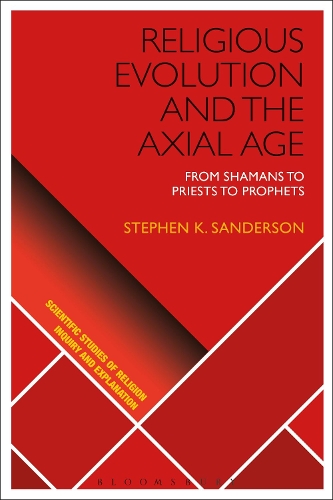
Religious Evolution and the Axial Age: From Shamans to Priests to Prophets
(Paperback)
Available Formats
Publishing Details
Religious Evolution and the Axial Age: From Shamans to Priests to Prophets
By (Author) Stephen K. Sanderson
Bloomsbury Publishing PLC
Bloomsbury Academic
25th July 2019
United Kingdom
Classifications
Tertiary Education
Non Fiction
Comparative religion
History of religion
Social groups: religious groups and communities
Christianity
Theology
200.9
Physical Properties
Paperback
320
Width 156mm, Height 234mm
445g
Description
Religious Evolution and the Axial Age describes and explains the evolution of religion over the past ten millennia. It shows that an overall evolutionary sequence can be observed, running from the spirit and shaman dominated religions of small-scale societies, to the archaic religions of the ancient civilizations, and then to the salvation religions of the Axial Age. Stephen K. Sanderson draws on ideas from new cognitive and evolutionary psychological theories, as well as comparative religion, anthropology, history, and sociology. He argues that religion is a biological adaptation that evolved in order to solve a number of human problems, especially those concerned with existential anxiety and ontological insecurity. Much of the focus of the book is on the Axial Age, the period in the second half of the first millennium BCE that marked the greatest religious transformation in world history. The book demonstrates that, as a result of massive increases in the scale and scope of war and large-scale urbanization, the problems of existential anxiety and ontological insecurity became particularly acute. These changes evoked new religious needs, especially for salvation and release from suffering. As a result entirely new religionsZoroastrianism, Judaism, Christianity, Hinduism, Buddhism, Confucianism, and Daoismarose to help people cope with the demands of the new historical era.
Reviews
This is a major contribution to the evolutionary study of religion. Sanderson masterfully engages both the rich historical scholarship on religion and the contemporary theoretical work on the evolution of religion, offering a novel and insightful analysis. The evolutionary study of religion is fortunate to have a scholar of such breadth, proficiency, and dedication wrestle with the most pressing questions in the field. * Richard Sosis, James Barnett Professor of Humanistic Anthropology, University of Connecticut, USA *
Sanderson makes an important contribution to the question of diversity, arguing that religions are essentially biosocial adaptations to changing environments. This bold new theory deserves serious attention from, and systematic testing by, a wide range of scholars and scientists. * Harvey Whitehouse, Director of the Institute of Cognitive and Evolutionary Anthropology, University of Oxford, UK *
Sanderson argues persuasively that such movements as the transcendental world religions of the Axial and subsequent ages reflect changing social conditions. These religions were responses, he holds, to increasing population pressures, political and ethnic alienation, and warfare, from which their adherents sought salvation. * Stewart Elliott Guthrie, Professor Emeritus of Anthropology, Fordham University, USA *
Author Bio
Stephen K. Sanderson is Research Associate at the Institute for Research on World-Systems at the University of California, Riverside, USA. He is the author of numerous books, most recently Modern Societies: A Comparative Perspective (2015) and Human Nature and the Evolution of Society (2014).
